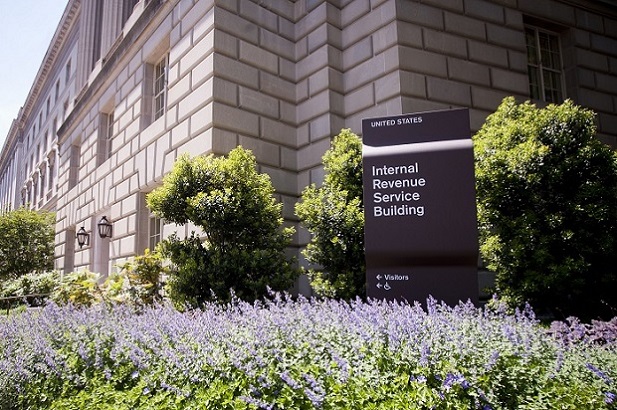 (Photo: Diego M. Radzinschi/THE NATIONAL LAW JOURNAL)
(Photo: Diego M. Radzinschi/THE NATIONAL LAW JOURNAL)
The IRS has granted additional, albeit temporary, COVID-19-related relief for sponsors of "safe-harbor" 401(k) and 403(b) plans — plans that are exempt from one or both of the ADP and ACP nondiscrimination tests.
Notice 2020-52, which was recently issued, provides temporary relief from the current requirements for mid-year amendments to such plans, and provides additional clarification regarding mid-year amendments to safe-harbor plans that only affect highly compensated employees.
This guidance is welcome relief for plan sponsors who feel the financial need to reduce or suspend employer contributions under these plans, but who may not be able to satisfy the current regulatory requirements for mid-year amendments.
Background
Employee deferrals, whether pre-tax contributions or designated Roth contributions, to 401(k) plans generally must satisfy the Average Deferral Percentage (ADP) test, which compares the average deferral rate of non-highly compensated employees (NHCEs) to the average deferral rate of highly compensated employees (HCEs).
If the average deferral rate of the HCEs is too high (as compared to the NHCE deferral rate), the plan must either (i) refund "excess" employee contributions to HCEs, or (ii) make additional "qualified" employer contributions for NHCEs.
Similarly, employer matching contributions and employee after-tax contributions to 401(k) plans — and 403(b) plans generally — must satisfy a similar test, known as the Average Contribution Percentage (ACP) test. If the average contribution rate for HCEs is too high, as compared to the average contribution rate for NHCEs, the plan must either (i) refund (or forfeit) the "excess" contributions to HCEs, or (ii) make additional "qualified" employer contributions for NHCEs.
Plan sponsors can avoid the ADP test or the ACP test — or both — by structuring their 401(k) (or 403(b)) plans as "safe-harbor" plans, whether the "traditional" 401(k) safe harbor or the "qualified automatic contribution arrangement" or "QACA," generally require the employer to (i) make employer matching or non-elective contributions (i.e.. "safe-harbor contributions") of some minimum percentage of compensation with specific vesting requirements, and (ii) provide a "safe harbor" notice prior to the first day of the year.
A safe harbor plan generally must be in place by the first day of the plan year and remain in place for the entire plan year.
The 401(k) regulations provide a limited exception to the general rule that safe-harbor plans cannot be amended to change the amount of employer "safe-harbor" contributions in the middle of a plan year.
Under this exception, the plan sponsor must provide a supplemental notice at least 30 days before the effective date of the suspension or reduction, and the plan must satisfy the ADP and/or ACP tests, as applicable, for the entire plan year using the "current year" testing method.
However, such mid-year amendments may only be made if the employer either (i) is "operating at an economic loss" (as described in Section 412 of the Code) for the plan year, or (ii) previously included in the plan's safe-harbor notice a statement that the plan may be amended during the plan year to reduce or suspend safe harbor contributions.
In addition, the reduction or suspension cannot be effective until the later of (i) 30 days after the supplemental notice is provided, or (ii) the date the amendment is adopted.
Temporary suspension of mid-year amendment requirements
In Notice 2020-52, the IRS notes that because of the ongoing COVID-19 pandemic many employers are facing unprecedented financial challenges, and may need to reduce or suspend safe-harbor contributions in order to satisfy payroll or other operating costs.
However, the IRS also recognizes that many employers may be uncertain whether they are "operating at an economic loss" as defined in the regulation, and/or may not have foreseen the need to include the requisite caveat in the plan's safe-harbor notice, warning participants that safe-harbor contributions may be reduced mid-year.
The IRS also notes that employers may have difficulty satisfying the timing requirements for providing the supplemental notice, regarding the reduction or suspension of safe-harbor contributions.
Under the relief set forth in the Notice, if an employer adopts an amendment reducing or suspending safe-harbor contributions between March 13, 2020, and August 31, 2020, the plan need not satisfy the requirement that the employer either (i) is operating at an economic loss for the plan year, or (ii) provided the requisite "maybe not" statement as part of the safe-harbor notice that was distributed prior to the 2020 plan year.
In addition, if the plan satisfies the safe-harbor requirements with non-elective safe harbor contributions (rather than matching contributions), the plan sponsor need not provide the supplemental notice at least 30 days before the reduction or suspension, so long as (i) the supplemental notice is provided no later than August 31, 2020, and (ii) the plan amendment is adopted no later than the effective date of the reduction or suspension.
However, there is no relief from the timing requirements for the supplemental notice for plans that make safe-harbor matching contributions, as the level of matching contributions may directly affect an employee's salary deferral decisions.
Amendments that affect only HCEs
The Notice also clarifies that a mid-year amendment that only reduces (or suspends) contributions for HCEs is not considered a "reduction or suspension of safe-harbor contributions," and is therefore not subject to the requirements discussed above, regardless of when the amendment is adopted.
However, such an amendment is still a "mid-year" change to the plan's safe-harbor notice content for purposes of IRS Notice 2016-16 (the IRS's most recent guidance on mid-year amendments to safe-harbor plans that do not involve a suspension or reduction of safe-harbor contributions), and therefore an updated safe harbor notice and an election opportunity must be provided to HCEs to whom the mid-year change applies.
Impact of the SECURE Act
Section 103 of the SECURE Act eliminated the safe-harbor notice requirement for plans that satisfy the safe-harbor requirement with non-elective, rather than matching, contributions.
Notice 2020-52 does not address the impact of Section 103 of the SECURE Act. In a footnote, the IRS specifically states that the guidance in Section III of the Notice, which clarifies the requirements for amendments that only affect HCEs, does not address the impact of the SECURE Act's elimination of the notice requirement for non-elective safe harbor plans.
Additional guidance from the IRS would be helpful to understand how the statutory elimination of the safe-harbor notice requirement for plans making non-elective safe-harbor contributions will impact mid-year amendments to such plans.
 Rob Browning is of counsel at Spencer Fane LLP in the firm's Overland Park, Kansas office.
Rob Browning is of counsel at Spencer Fane LLP in the firm's Overland Park, Kansas office.
READ MORE:
© 2025 ALM Global, LLC, All Rights Reserved. Request academic re-use from www.copyright.com. All other uses, submit a request to [email protected]. For more information visit Asset & Logo Licensing.







